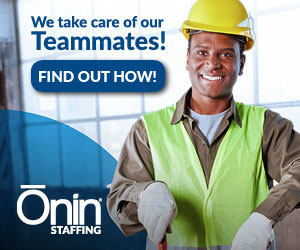You have probably heard the term “climbing the ladder” in reference to someone’s career within an organization. What may have never occurred to you is that ladders have an endpoint or a top whereas scaffolds can be infinite. Creating a scaffold rather than a ladder for your employees to scale can benefit your organization in multiple ways. Companies that do this tend to have higher employee engagement and retention rates.
When climbing the proverbial ladder there is only one way to go: up vertically. There is no other option. In companies where there is a ladder to climb, there is a clear path from where an employee needs to start and where the “finish line” is. While this can be a great way to keep employees engaged, it does come to an end and can lead to some staff members feelings discouraged.
However, career scaffolding can move forward infinitely. You can move horizontally, vertically and diagonally, continuously expanding on your skills with every move. Not to mention, when you implement a scaffold design to your career development programs, it can benefit your organization in numerous ways.
So, how do you go about creating a scaffold for your staff to scale rather than a narrower ladder?
Rotate Your Employees
One way you can begin to implement a scaffold style development program in your organization is by regularly rotating your employees. This gives them the opportunity to work within multiple departments and learn a wide variety of skills. Not only does this make them a more valuable asset to your team but it also makes it easier for your staff to stay engaged in their work.
Identify some of the transferable skills your current staff has and figure out where they can be easily transferred across the organization. For example, administrative assistants may be useful in helping with project management tasks. You can also begin to gauge your employees’ interest in learning about other positions in the company as well. Survey your staff to see who would be willing to learn more and what areas they are most interested in.
Create a Positive Company Culture
When you create a career scaffold rather than a ladder, there will be less competition within your company culture. Instead, people will be focused on expanding their knowledge and expertise. You will also be offering these opportunities to your entire staff so there will never be any hard feelings when one employee makes a move in the organization.
You can create a positive company culture around career development by offering mentorship programs and extending development opportunities to the entire staff. It can also be a good idea to provide information about industry events and networking opportunities as well. Simply show your employees you care about the future of their careers. This will not only help keep them engaged in your organization but also create fierce loyalty among your staff as well. They will see your work to help them expand their career and will want to do the same for your company
Focus on Career Development
There are a number of ways you can focus on career development for your staff. As mentioned above, you can rotate your employees and create a company culture rooted in growth. You can also actively make it a goal of yours to focus on developing opportunities for your team. For instance, you may offer regular courses or training programs to help your employees refine their skills.
You may also consider implementing mentorship programs in your organization. This will give your employees a chance to interact with one another and learn from each other. Everyone will learn something while engaging with others in the company. Overall, this can help improve morale and collaboration in the workplace.
How This Enriches Your Staff
Quite honestly, finding a niche in a career and being deadset on the desired outcome can limit career development greatly. For employers and managers, implementing a “scaffold” mindset in your organization will help you expand the skills of your staff. You will have more adaptable individuals on your team who are able to work in multiple departments. Here are some benefits of doing so.
- Creates loyalty among your staff. Your employees will value their position with your company and enjoy what they do.
- Your employees will be more engaged. When there are plans for them to expand their skills within your organization, they will be more engaged overall.
- They will be more adaptable. As you take the time to cross-train your employees and broaden their skill set they will be more adaptable to change, which is always a benefit.
- Workplace collaboration will improve. There will be less competition in the workplace, making collaboration easier. More of your staff will also understand the many moving parts of a project, which also makes collaboration easier.
- Last, but not least, putting time and money into career development for your staff will help improve your retention rates. You will be investing in them and creating a positive culture where they want to stay.






